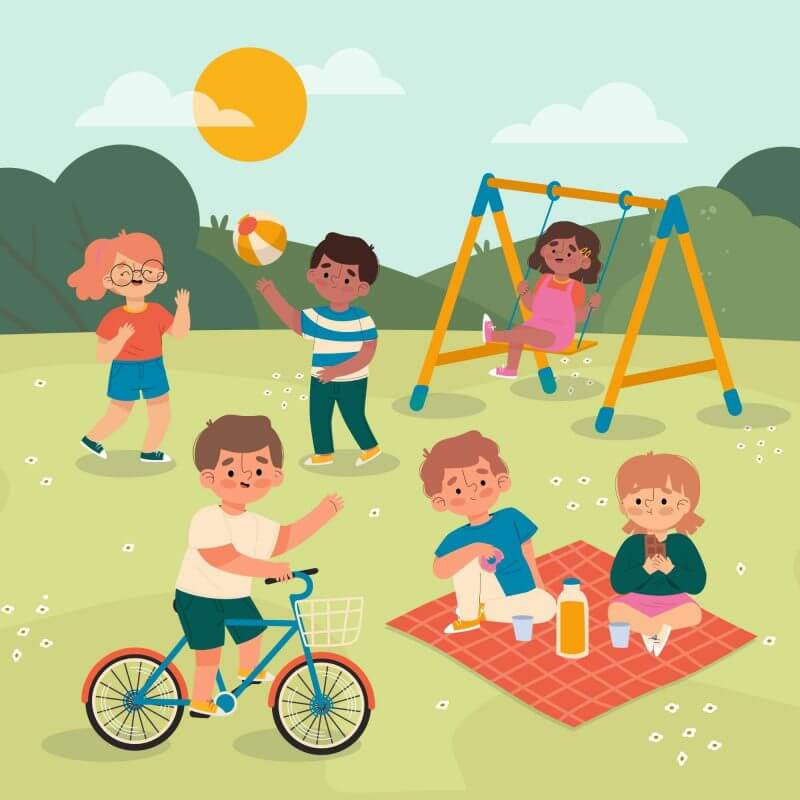
It All Makes Sense Now
As you might have known, I’m a paediatric Occupational Therapist (OT), and I work closely with families, teachers, and other healthcare professionals to help my little clients thrive. The word “sensory” has become the buzzword among all the professionals I have been working with.
“Would you mind helping us to look at this boy’s sensory needs? He is wobbling on the chair all day in school.”
“Hi, this is Charlie’s mom, the speech and language therapists said we might need some strategies for helping Charlie to regulate and focus better in school… Is it possible for us to book a session for that…?”
Maybe you’ve heard about the five (5) senses in school. And if you’ve worked with an OT before, you might know about the extra three (+3) senses we talk about. No worries if this is all new – what I’m about to share will be helpful for you and your little one, from streamlining daily routines to creating a more kid-focused routine chart.
Now, just sit back and relax while reading this. Grab a cup of tea and a couple of biscuits, and let’s dive in!
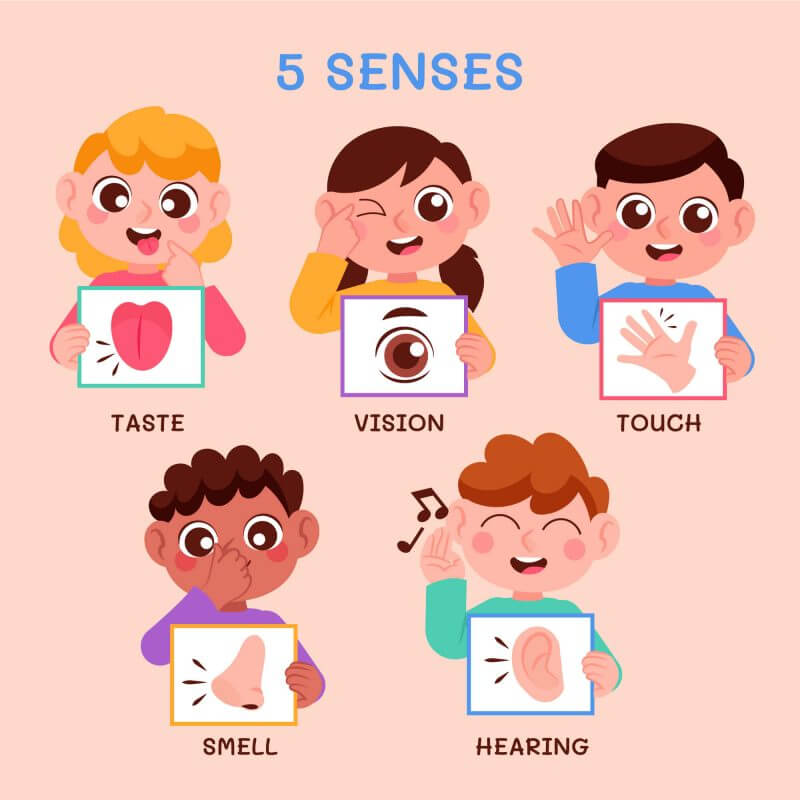
Here comes the big question, What does “sensory” mean?
Our brain is always getting and sorting information from the world around us – whether we’re working, resting, or just playing around. Our body has these sensors (like little detectors) that pick up sensory stuff and send it to our brain – the central control hub – so we know how to react and respond to what’s going on.
As your little ones grow up day by day, they’re on a non-stop adventure exploring and understanding the world. From those wobbly first steps to trying new foods, their journey never stops. Have you ever wondered what has happened internally in their body and brain during all this exploring? Since day one, we start learning about our surroundings through our senses. As we get older, we get better at understanding and reacting to the stuff around us – this skill is called “sensory processing.”
You might have heard about the five (5) regular senses, but what about those extra three (+3)?
Let’s start with the five senses:
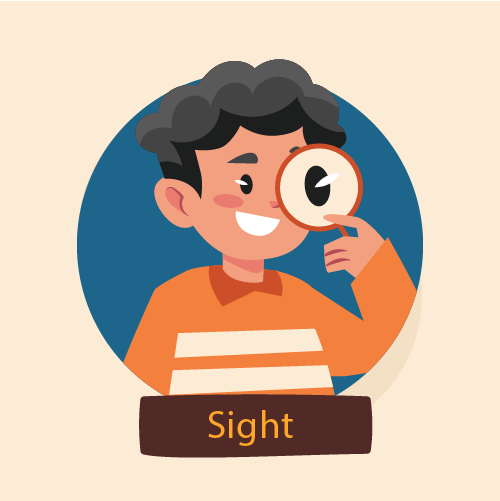
1. The Visual Sense (Sight)
We use this sense every day to understand what’s happening around us. But seeing things is more than just looking at pictures. Vision is what helps us accurately pick up visual info (stimuli). Our brain works closely with nerve signals to decide if we need to respond to input – like turning our head to look at a cyclist passing by or finding a missing puzzle piece in a pile.
Of course, Rome wasn’t built in one day. We learned to see the “whole picture” through the development of physical capacities and cognitive skills. It’s a journey of developing physical abilities and cognitive skills. As babies, we start with eye movements to focus and look at things, and then neck movements follow. As we respond to auditory inputs, curious babies move towards sounds to see what’s up. Growing older, we become more sophisticated in using our visual system, engaging in activities that demand higher visual skills, like tracking a soccer ball moving on a distant field. We also learn the meanings of symbols in languages and how to read and write them.
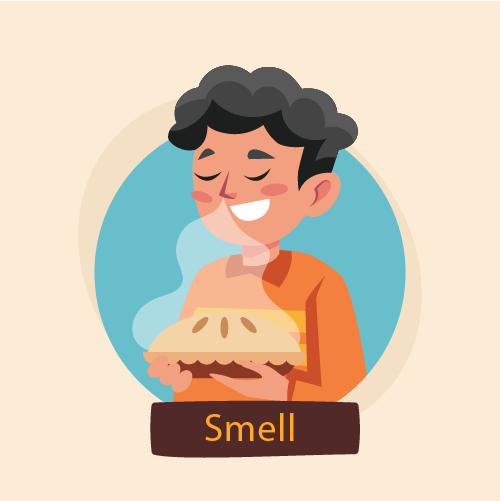
2. The Olfactory Sense (Smell)
Our nose’s olfactory sensors help us smell and distinguish scents around us. Fun fact: The sense of smell is closely linked to a part of the brain responsible for memory, learning, emotions, and pleasure. That’s why your favourite candle scent or the aroma of a family dish can impact your mood.
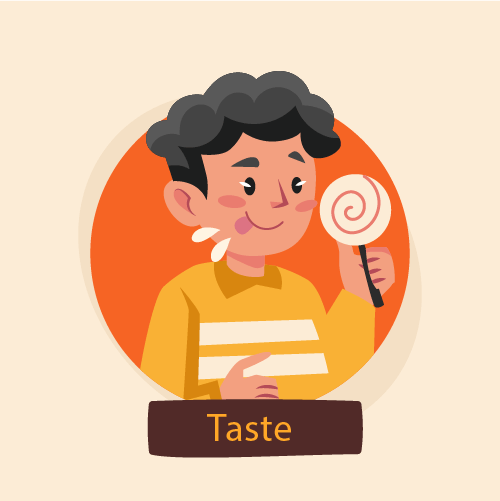
3. The Gustatory Sense (Taste)
The sense of taste works collaboratively with the sense of smell. We experience 5 main tastes: sweet, salty, bitter, sour and umami (e.g. the taste from the msg). As you might know, we taste food with the sensor from the taste buds located on our tongue. There are areas where specific tastes can be detected in stronger inputs. Taste buds on our tongues detect these tastes, and certain areas are more sensitive to specific tastes. But what about texture? That’s where the tactile sense comes in – more on that later.
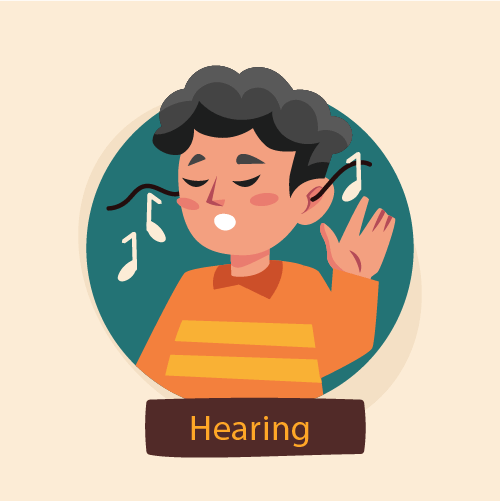
“Hey buddy, can you hear me?” “Are you listening?”
Hearing isn’t just about hearing sounds; it’s about receiving sound waves in our ears and processing them in the brain. Sound travels to our cochlea (ear’s structure) through the air. Sensors in the cochlea turn sound into nerve signals sent to the brain. So, listening involves two steps: hearing and processing sound. Think about your favourite song – it’s not just a wave; it’s a bundle of dimensions like loudness, pitch, duration, and direction. Processing organizes this info so we can understand language, enjoy music, and hear sounds in our surroundings.
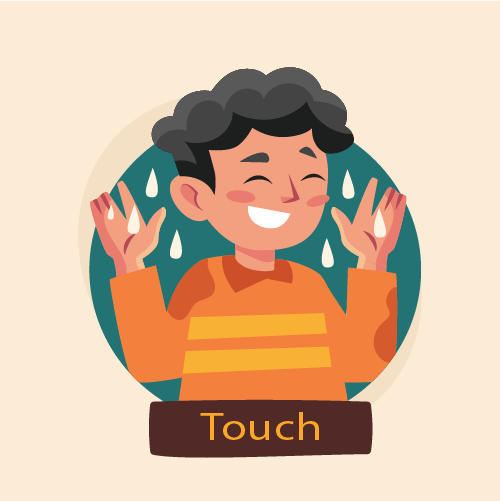
5. The Tactile Sense (Touch)
The tactile system is the first to develop in our mother’s womb and is the largest sensory system. Tactile receptors are spread throughout our bodies – in the skin, throat, mouth lining, digestive system, and more.
These tactile receptors help us to identify light touch, deep pressure, vibration, temperature, and pain.
|
Light touch |
Our body uses this sense to detect inputs like the texture of clothing we wear during the day, the platform (concrete floor, sand, grass etc.) we are standing on, the feeling of having water on our face/ body, the texture of the food in our mouth, etc. |
|
Deep pressure |
Deep pressure inputs could be coming from massage, crashing play, rolling, bouncing or even big hugs. |
|
Vibration |
Vibration sensation can be felt from a massage chair, the car ride along a long road trip, or even from the machine/ appliances such as the washing machine. |
|
Temperature |
The feeling of temperature is described as a subjective feeling, which can vary between individuals. This can affect our daily living activities participation, such as eating (the temperature of the food) or showering/ bathing (the temperature of the water). |
|
Pain sensation |
This sensation comes with an alerting effect for most of us. This sensation ranges from a light scratch from a paper cut to the excruciating pain from a traumatic injury. |
The +3 senses:
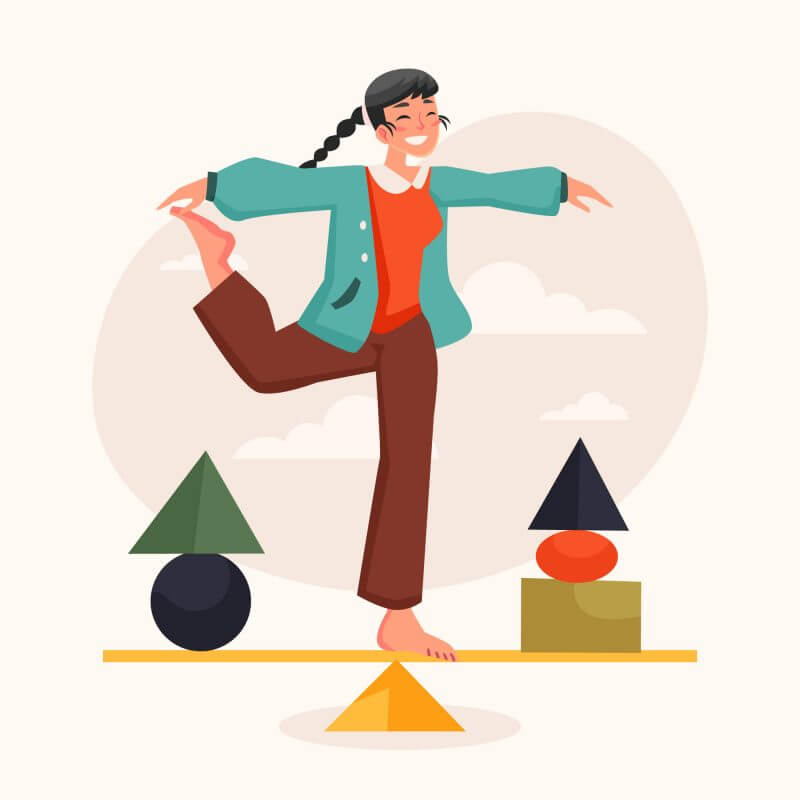
The vestibular sense (the balance sense)
Our vestibular system is active from day one. It’s thanks to tiny structures like the semi-circular canals and otoliths in our inner ears that we sense movement, head position, and balance. They also help us feel acceleration, deceleration, and rotary head movement.
|
Linear vestibular input
|
A seesaw/ trampoline can provide us with the sensation of going up and down vertically
A swing can give us front-to-back movement
A tire swing/ platform swing/ hammock can provide us with inputs From the side-to-side movement
|
|
Side-lying vestibular input |
When the child is lying down with his/her head on one side, on a mobilising platform (e.g. scooter board), you will be experiencing this input. This is similar to the feeling of lying down flat on a long railway sleeper trip. |
|
Inversion vestibular input
|
If you lie down flat and upside-down on the platform swing (with your head facing the environment around you), you then can experience the feeling of the inversion sense. Remember the time we tilted our head back when washing our hair or went on a ride full 360 degrees
|
|
Orbital vestibular input
|
The coffee cup/ hold-n-spin spinner gives us the revolving sensation as if we are planet Earth going around the sun.
|
|
Rotary vestibular input
|
The roundabout/ round iron can give us a sense of rotation as if we are spinning ourselves on the office chair. |
The vestibular sense works as one of the modulators of the sensory inputs. Therefore, when the child develops a responsive vestibular sense, he or she is in a better position to:
• Have better balance
• Develop stronger postural control (normal muscle tone)
• Establish better self-regulation skills
• Promote visual tracking (focusing on a visual target while observing a moving object)
• Develop better gross and fine motor skills
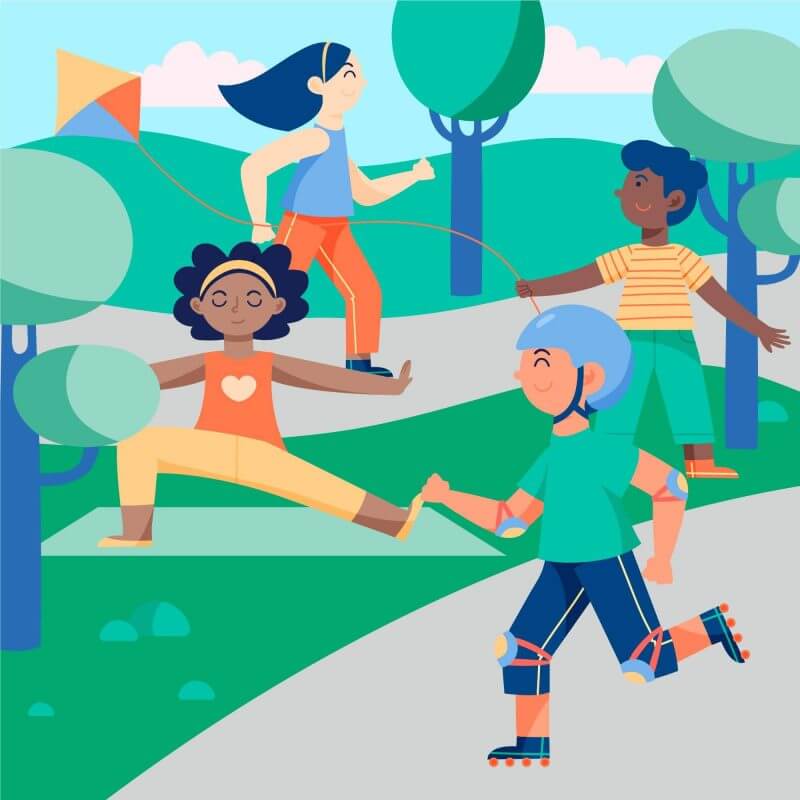
The proprioceptive sense (the movement sense)
Let’s get that the proprioceptive sense might not be on everyone’s radar. The proprioceptive sense is the internal sense that helps you to understand where your body parts are located and to gauge and recalibrate the force required for certain activities. These receptors for proprioception are scattered in your joints, muscles, ligaments, and even those connective tissues. Now, for us grown-ups, we kind of handle these proprioceptive inputs without even realizing it. It’s like on our brain’s autopilot mode unless we decide to give it some thought.
But here’s the deal: this sense is pure gold when it comes to developing motor skills and nailing those motor plans straight from your brain. Let’s take passing a soccer ball to your teammate as an example. Picture this: You’re in the moment, ready to send that ball flying. First, you eyeball your teammate’s spot to get the lay of the land – the direction and how far. Then, like a pro, you tweak your body and leg positions to aim yourself right where you want that ball to land. And guess who’s the star of this show? Yep, proprioception. It’s like your personal awareness coach, helping you nail that perfect kick. But that’s not all – you also fine-tune the force you put into the kick, using a combo of muscle signals and visual cues. So, it’s not just a kick, it’s a kick in perfect sync with your body’s symphony.
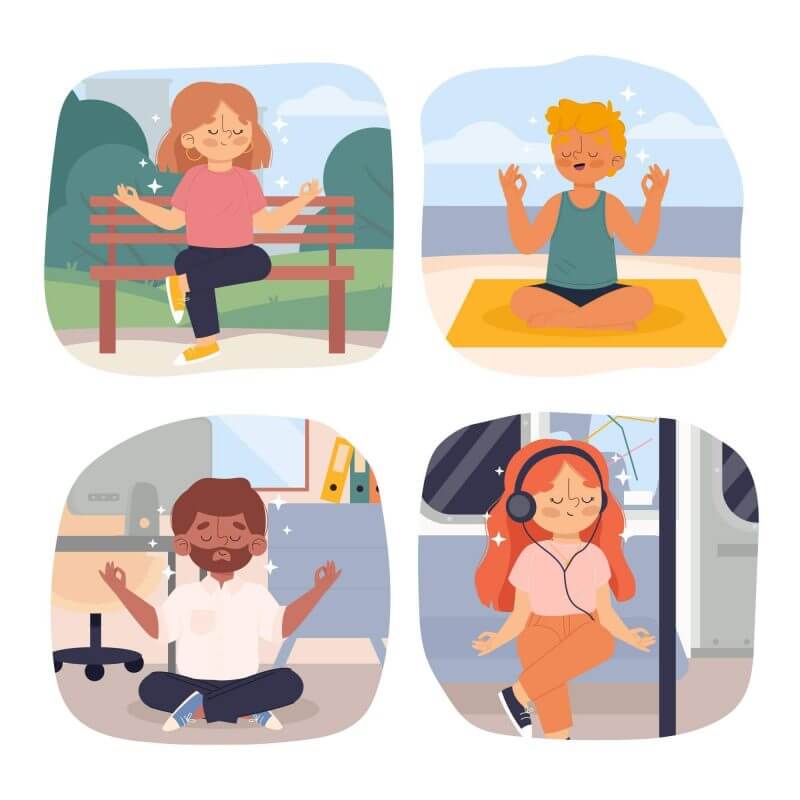
The interoceptive sense (internal sense)
This sense is lesser known but important. It lets us feel signals from organs – like hunger/fullness, heart rate, breathing, and pain. It signals actions we need to take. For instance, a full bladder signals it’s time to use the toilet. A rapid heartbeat might indicate a child needs a break from an activity.
We, adults, need to pay attention and respond to kids’ interoceptive signals. Younger children might need adult help to prevent issues like accidents. It’s all part of the learning curve. With the experience, we learn to turn in to promptly respond to these signals and take action for better self-care – just like when we decide to kick back and rest instead of pushing through work when we’re under the weather. Experience teaches us well!
So, that’s the rundown of all the senses we use in our everyday lives. I get that it’s a bunch of info, especially if this is your first time diving into it. Just like I tell all the people I work with, whether they’re clients, family, or my little bosses, it’s all about the journey of learning as we go through life. Every day brings new discoveries and rediscoveries.
Hope you found this info helpful! And hey, if you’re curious, feel free to explore more of the HatchOT resources too!
Biel, L., & Peske, N. (2009). Raising a sensory smart child: The definitive handbook for helping your child with sensory processing issues. Penguin.
Lane, S. J., Mailloux, Z., Schoen, S., Bundy, A., May-Benson, T. A., Parham, L. D., … & Schaaf, R. C. (2019). Neural foundations of ayres sensory integration®. Brain sciences, 9(7), 153.
Smith Roley, S., Mailloux, Z., Miller-Kuhaneck, H., & Glennon, T. J. (2007). Understanding Ayres’ sensory integration.
Angelaki, D. & Dickman, J. D. (2023). The vestibular system. In R. Biswas-Diener & E. Diener (Eds), Noba textbook series: Psychology. Champaign, IL: DEF publishers. Retrieved from http://noba.to/ey5sb6fg
